Autonomous transport holds the key for the future of the mobility industry
- Like
- Digg
- Del
- Tumblr
- VKontakte
- Buffer
- Love This
- Odnoklassniki
- Meneame
- Blogger
- Amazon
- Yahoo Mail
- Gmail
- AOL
- Newsvine
- HackerNews
- Evernote
- MySpace
- Mail.ru
- Viadeo
- Line
- Comments
- Yummly
- SMS
- Viber
- Telegram
- Subscribe
- Skype
- Facebook Messenger
- Kakao
- LiveJournal
- Yammer
- Edgar
- Fintel
- Mix
- Instapaper
- Copy Link
Posted: 2 March 2022 | James Dick - RATP Dev | No comments yet
Autonomous vehicles are currently one of the most disruptive forms of new mobility, but the technology is undoubtably here to stay. For Intelligent Transport, James Dick, Project Lead for Autonomous Vehicles at RATP Dev, highlights the benefits of autonomous mobility and provides exclusive insight into the work that RATP is undertaking across the globe in the field of autonomy.
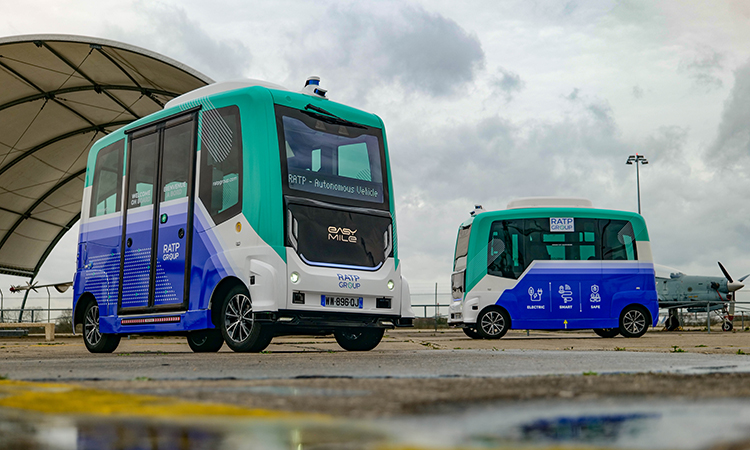

Credit: Christopher Pelletier
COVID-19 has had a significant impact on the way that we look at cities, particularly with regard to public transport. As we navigate the new normal, autonomous transport has the ability to unlock problems associated with the mobility systems of pre-pandemic towns and cities. Luckily, these innovations are no longer far off – they are already being rolled out at pace across the globe. At RATP Dev, we recognise that autonomous vehicles in public transport are a means of creating new and improved services, enabling us to meet customers’ ever evolving mobility needs and to do our part in tackling the climate crisis.
As we navigate the new normal, autonomous transport has the ability to unlock problems associated with the mobility systems of pre-pandemic towns and cities”
Therefore, our objective is clear – to prepare for the transport systems of tomorrow by identifying new services, while at the same time improving those already in existence. We recognise that innovation is essential in order to offer a quality service on a daily basis. After all, one of the aims of these electric autonomous vehicles is to help to complement existing transport solutions, and therefore ease traffic in town centres, reduce the impact of greenhouse gases, reallocate parking spaces and reduce noise pollution.
As a leading player in the operation of autonomous vehicle solutions, RATP Group and its international subsidiary RATP Dev are the strategic partners of smart and sustainable cities for integrating these modes of transport into local multimodal mobility networks. Drawing on our experience of operating and maintaining urban transport systems in 14 countries on four continents, we are taking action with suppliers, governments and regulators to prepare the world for fully automated public transport systems.
RATP Dev is seizing the opportunities that autonomous vehicles provide to fill in the ‘gaps’ in existing public transportation systems”
In order to achieve this goal, RATP Dev is seizing the opportunities that autonomous vehicles provide to fill in the ‘gaps’ in existing public transportation systems. Consequently, these cutting-edge solutions will provide support for the first and last mile of a commuter’s journey, on-demand transport and sparsely populated areas with limited footfall.
Rolling out autonomous vehicles around the world
RATP Group is currently increasing autonomous vehicle testing in various parts of the world in different types of environments. Take autonomous shuttles: we are already deploying this disruptive technology with our partners across our networks. For example, we are incorporating autonomous shuttles into local public transport networks in Europe to provide new services, in addition to our existing offering.
France
RATP Group and RATP Dev have a flagship project in Archamps, France. For a 12-month period, we ran an on-demand shuttle system, operating in mixed traffic that drove autonomously for over 2,000km in the business park ArchParc. Elsewhere in France, we ran a similar project in Boulogne-sur-Mer, where a shuttle was ferrying tourists from a car park to the main tourist attractions of the city. Near Paris, autonomous shuttles provide a connection from a metro station to the attractions of the Vincennes Woods.
We are also incorporating autonomous shuttles into extremely dense urban environments by implementing a comprehensive local service in Paris-Rive Gauche. In Saint-Rémy-lès-Chevreuse, we are launching an autonomous shuttle service to evaluate the possibility of connecting the vehicles to a station in a suburban area of the city.
On bus line 393 of the Parisian network, we are testing a 12m autonomous bus with a safety driver on a portion of the road. This experiment is one of the very first of its kind in the world, and the results are promising. RATP Dev is member of the Automated Bus Consortium in the U.S., which is fundamentally contributing to the development of the market in the country. The deployment of autonomous buses is another example of how we are committed to the future of autonomous mobility in public transport.
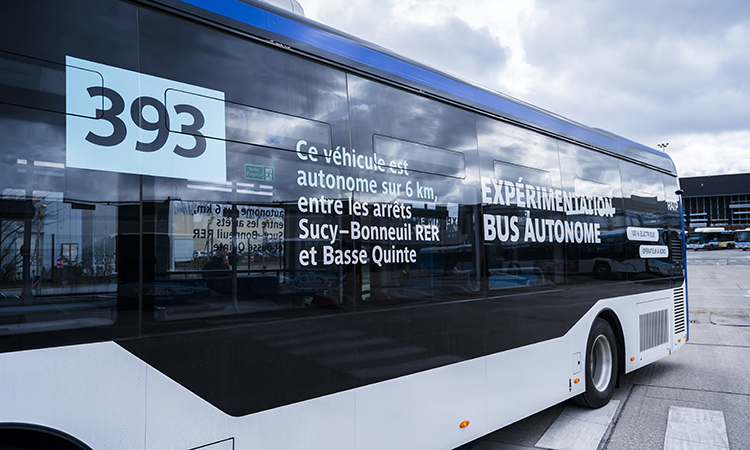

Credit: RATP – Hamdi Chref
Saudi Arabia
Moreover, RATP Dev Saudi Arabia has recently been supporting the Royal Commission for Al-Ula (RCU) as it puts smart mobility solutions in place for the benefit of visitors and residents. We are especially proud to contribute to the long-term preservation and development of the site by implementing green and agile mobility solutions. In Al-Ula and Heggra, Saudi’s first UNESCO World Heritage Site, we have helped to spearhead the design and operation of the innovative autonomous pod project, alongside our partners.
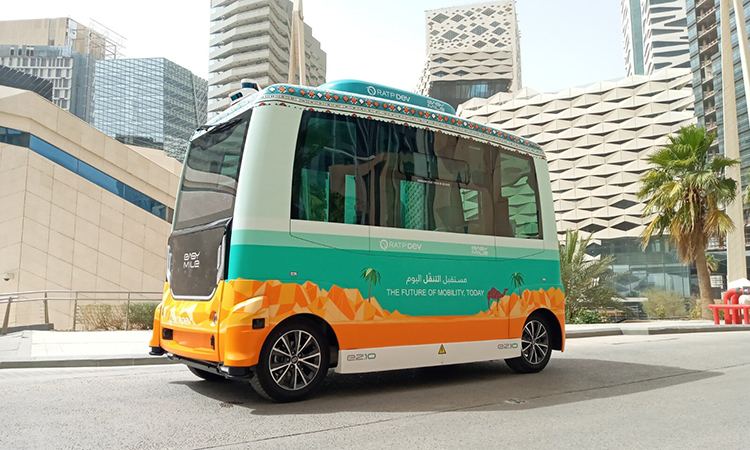

Credit: RATP Dev
In total, RATP Group and RATP Dev have conducted more than 15 experiments with autonomous vehicles, with more than 100,000 passengers transported. The complexity of each test has continuously increased in order to reach the quality of service that we now have.
We can observe that, thanks to all of these tests, the autonomous vehicle market is moving to a more productive phase, which means more efficient transport services for customers. However, the remaining challenges, prior to large scale commercial services, are to create supervision centres with safety operators monitoring a certain number of shuttles and all of the legislative framework associated with it.
The benefits of autonomous vehicles
Undoubtedly, autonomous vehicle technologies will create healthier and more sustainable cities. The aim of autonomous mobility is to foster a modal transfer from private cars to public transport and, in turn, become more convenient. Many already recognise that autonomous shuttles, and other self-driving vehicles, are the future of the mobility industry and provide a plethora of benefits to cities and customers.
The aim of autonomous mobility is to foster a modal transfer from private cars to public transport and, in turn, become more convenient”
For example, when it comes to safety, self-driving shuttles contribute to safer roads by reducing road-traffic accidents and congestion. The International Association of Public Transport (UITP) estimates that, today, 90 per cent of road traffic accidents are due to human error. RATP Dev’s ambitious autonomous shuttle projects have our company’s ongoing commitment to passenger safety at their core, and we believe that this technology can keep people safe. Guaranteeing operational safety and incorporating cyber-security are absolute priorities for RATP Dev as we integrate these mobility solutions into public transport networks.
In order to maximise the vehicles’ efficiency and safety, RATP Group often works with research institutions to conduct advanced studies into the safety, usage and governance of autonomous vehicles. For example, we have participated in the Safety and Acceptability of Autonomous Driving and Mobility (SAM) in France.
In addition to safer journeys, we believe that autonomous vehicles are also good news for the planet. According to the UITP, autonomous vehicles could take “every citizen to their destination with at least 80 per cent fewer cars”. The modal transfer from private cars to public transport would significantly reduce carbon emissions.
These autonomous vehicles are electric, which means zero local emissions and a reduced environmental impact during the entire lifecycle of the vehicle (in most cases, compared to similar thermic vehicles and depending on the electric mix of the area of use). We know that our customers recognise the importance of this issue and are encouraging us to do our part, hence why we are extremely passionate about the subject.
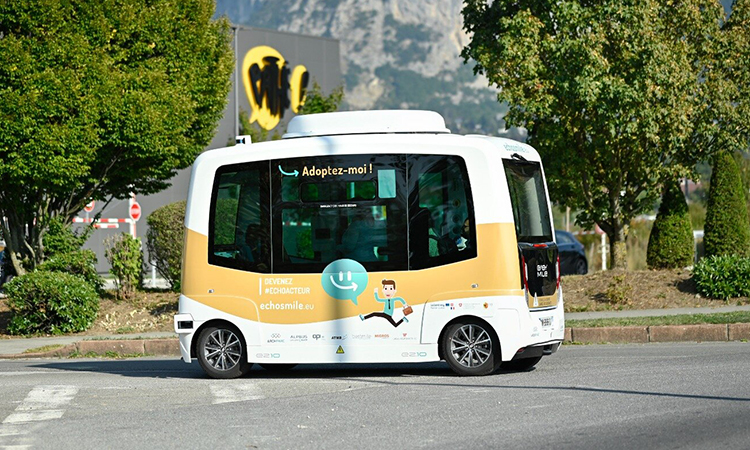

Credit: Laurent Cheviet for ArchParc
How can autonomous vehicles be integrated into mobility systems?
In order to build effective and responsible policies related to autonomous shuttles and other vehicles, we believe that it will be fundamental for RATP Dev to continue our close collaboration and transparency with our clients: cities and public transport authorities (PTAs). This will help to take our experience into account and, together, we can create a regulatory system that welcomes innovation and boosts the consumer experience. For example, creating a balanced integrated multimodal mobility offer. This is to ensure that these fleets of shared autonomous vehicles are integrated into a complete mobility solution. Another challenge is to tackle the technical maturity of such vehicles. As such, we are working very closely with our providers in order to overcome any challenges before opening large scale commercial services. Fundamentally, close relationships with PTAs and autonomous vehicle providers positions us as the key player in this sector.
Mobility-as-a-Service will play a crucial role in order to ensure that autonomous shuttles are successfully integrated into existing transport networks”
Mobility-as-a-Service (MaaS) will play a crucial role in order to ensure that autonomous shuttles are successfully integrated into existing transport networks. As a result of the COVID-19 pandemic, RATP Group and RATP Dev’s investment in MaaS has accelerated in order to make the consumer’s experience of mobility more efficient. For example, in Paris, we have successfully rolled out Bonjour RATP, which not only provides users with more transport choices for the same journey while remaining in the same app, but also offers the most complete and fluid experience. Fundamentally, RATP Dev’s vision is intermodal because this is key to offering a complete mobility experience for the public – and autonomous shuttles and other vehicles are imperative to this vision.
Ensuring success
Looking to the future, we are focused on maintaining the autonomous vehicle project’s success. In particular, by continuing to collaborate with our trusted partners, including technical partners, located around the world.
Furthermore, in partnership with ADP Group and Choose Paris Region for urban air transport, RATP Group is conducting experiments with autonomous aircraft. The automation of air transport must overcome many regulatory and operational challenges. However, we are working to make this a reality – RATP Group and our partners are now preparing the first flying vehicle trials, initially with pilots, in a secure environment at a dedicated area of the Pontoise – Cormeilles-en-Vexin aerodrome. Thanks to its ability to cover large distances in a short period of time, automated air travel could meet needs not currently covered by existing services.
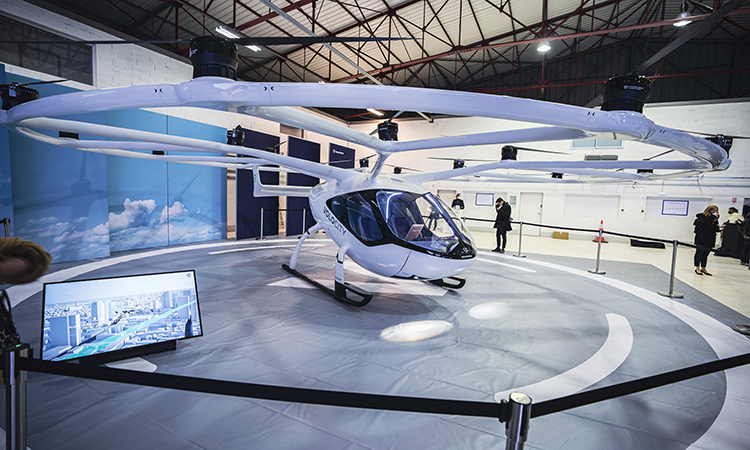

Credit: RATP – Hamdi Chref
Both RATP Group and RATP Dev are dedicated to carrying on developing and rolling out this technology in order to improve the customer experience. After all, we pride ourselves as always being at the forefront of exploring new mobility solutions across the world. As such, autonomous shuttles and driverless vehicles are essential to the mobility sector because of the rich and diverse benefits that they offer. They will significantly alter and improve urban transport systems for the better.
James Dick has been the Project Lead for Autonomous Vehicles (AV) at RATP Dev for nearly two years. His experience at RATP Dev has allowed him to lead AV projects in different regions of France, the Middle East and the U.S.
Dick has worked for five years in public transport and on various kinds of new mobility services, including autonomous vehicles but also car-sharing and bike-sharing.
Dick graduated with a degree in Engineering from the Technical University of Compiègne (UTC) and also has a Master’s degree in Transport and Sustainable Development from l’Ecole Nationale des Ponts-et-Chaussées.
Related topics
Alternative Power, Connected & Autonomous Vehicles, COVID-19, Fleet Management & Maintenance, Mobility Services, Multimodality, On-Demand Transport, Passenger Experience, Public Transport, Sustainable Urban Transport, Vehicle & Passenger Safety
Related modes
Autonomous Shuttle, Autonomous vehicles
Related countries
France, Saudi Arabia, United States
Related organisations
RATP Dev, RATP Group
Related people
James Dick








